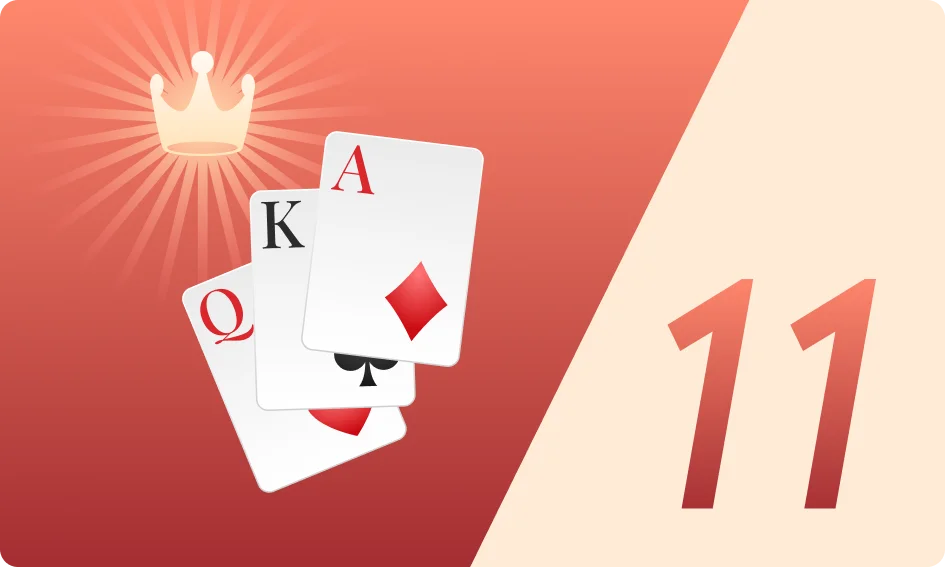Klondike Solitaire can be unforgiving if you don’t go into it with a clear plan in mind. I’m sure we’ve all felt stuck and annoyed at some point while playing this game. It’s easy to start thinking that the only way to make progress is by using the hint option.
It’s also tempting to rush to the ‘reset’ button. I used to be that way. Whenever I reached what seemed to be a dead end, I’d convince myself that it was time for a new shuffle. There are, however, specific strategies you can follow to avoid this. Doing so will mean that the next Solitaire game you play isn’t as frustrating as your previous ones.
You’ll find it comforting to know that the odds of winning an average game of Klondike Solitaire are around 82%. This means that you can win quite easily, especially if you follow a good strategy and have the right focus.
Best Strategies to Win at Klondike Solitaire
There’s no flawless method you can follow to guarantee that you win when playing Klondike (whether physically or on thesolitaire.com). Sometimes, you just get dealt a bad hand, one that makes getting trapped very easy. In fact, one out of every 400 shuffles gives you an unsolvable puzzle. Nonetheless, the strategies I am going to suggest will significantly improve your chances of winning.
Clean Up Larger Stacks
In Klondike Solitaire, the bottom grid is arranged into columns containing one, two, three, four, five, six, and seven cards, with only the topmost card exposed. The game is all about revealing the hidden cards, which you can do by moving cards around. Try to expose cards in bigger stacks; this will make your job so much easier. You’ll have more cards to move around and you’ll be much less likely to get stuck.
Don’t Empty a Slot Without a King in Hand
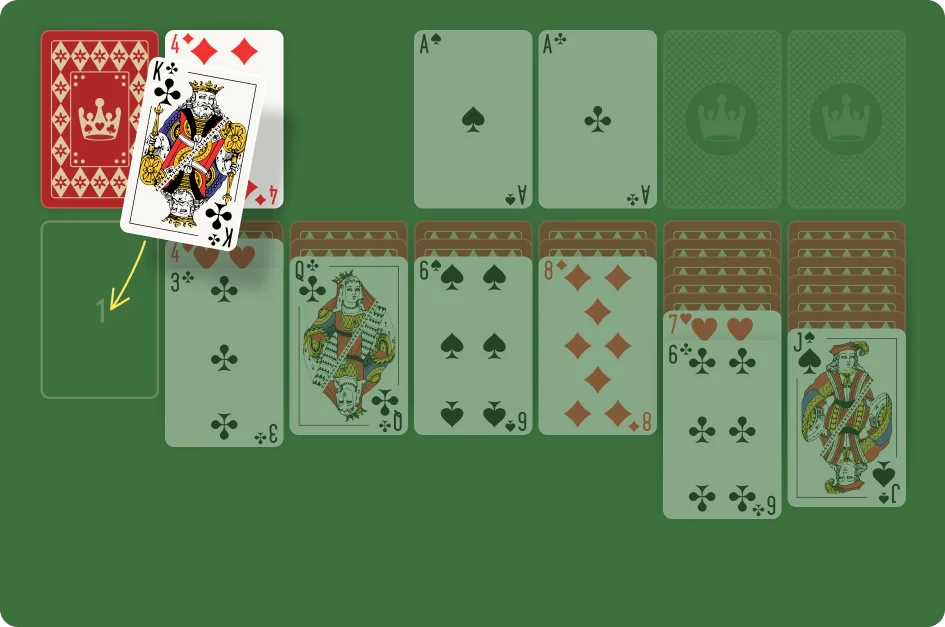
Finding good places to move your cards to is both productive and satisfying. But, it’s important not to rush your moves. One of the most important implementations of this concept relates to when you can open up a new slot (an empty pile). You should try to only do so when you have a King available. This tip also applies to stacks of cards starting with a King.
Move Low Cards to the Foundation
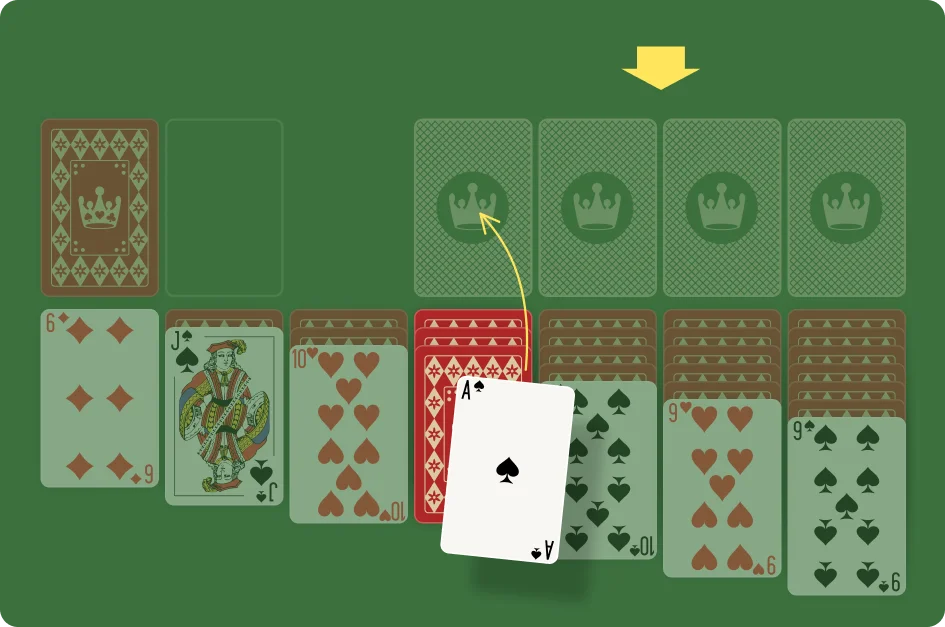
There’s no advantage to keeping an Ace anywhere but the foundation pile. This is because you can’t place any lower card on it (an Ace being the lowest card in the deck). So, whenever you see an ace, send it to the foundation immediately. The same applies to other low cards (once you have the option to place them in the foundation). However, as the numbers get higher, you might have reasons to keep them outside the foundation piles (I’ll return to this topic in a moment).
Keep the Order in Mind
Not everyone is immediately aware that the foundation piles are in ascending order and the tableau columns in descending order. Essentially, if all the cards in the tableau are suitably arranged, then you’ve already won the game. The only task now is to move them to their respective foundation piles.
Use Your First Stock Pile Move
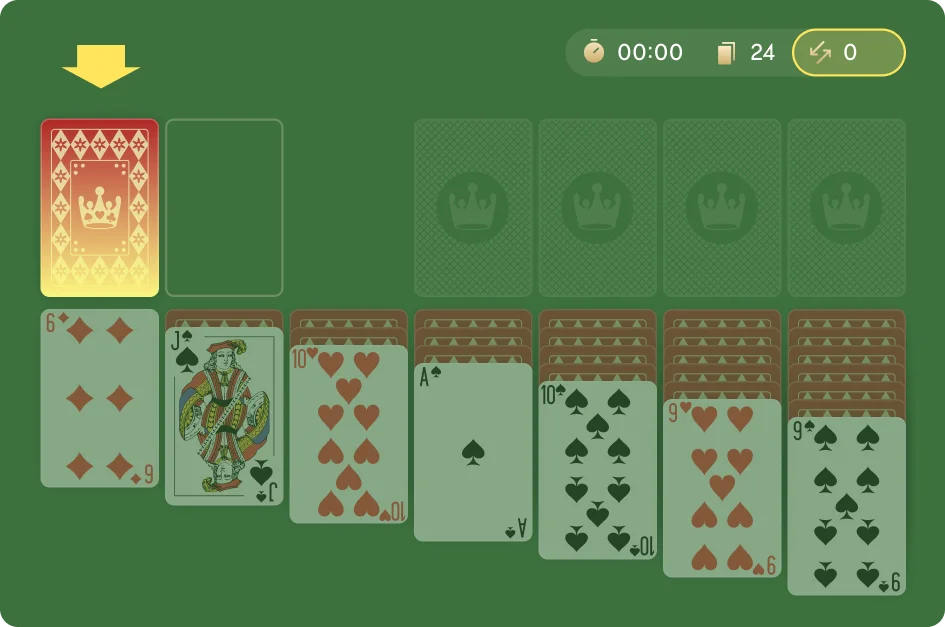
You’re going to draw a card from the stock pile eventually, so why not make it your first move? This way, you can use that card immediately (assuming there’s a place for it on the tableau or foundation piles). This can potentially open up new opportunities.
Save the Undo Button for Emergencies
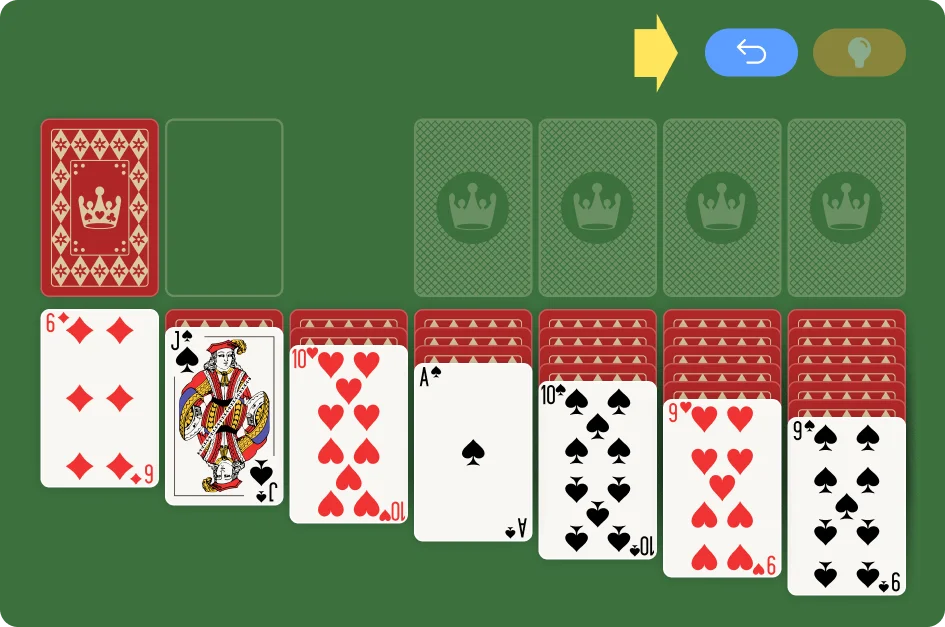
This isn’t really a strategy as such. But, it’s a good rule to follow. While the undo button can save you from sticky situations, you shouldn’t rely on it too much. If you do, then you won’t really improve your skills as you play. Ask yourself whether there’s absolutely no alternative before you resort to the undo button.
Plan Ahead
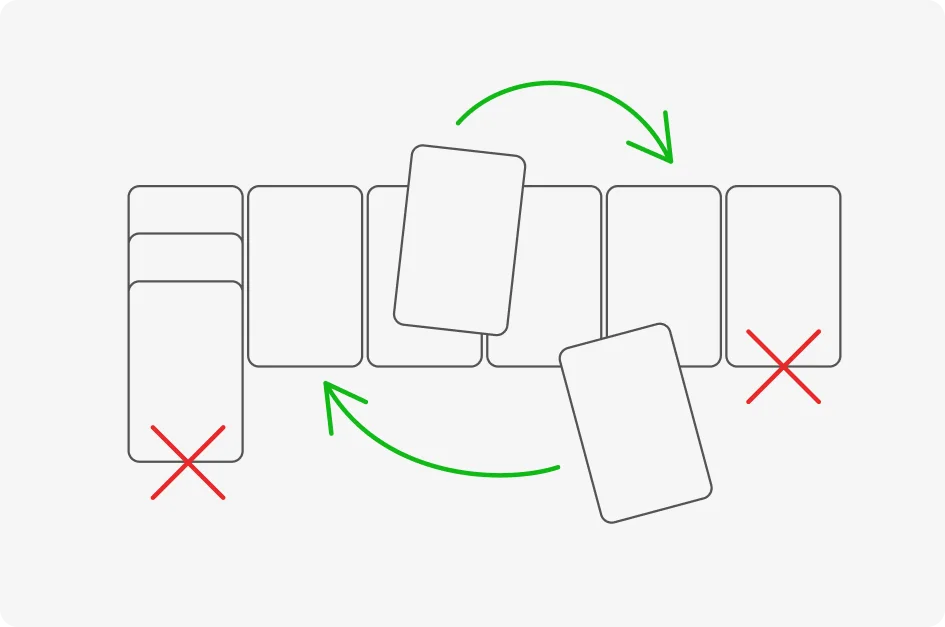
Don’t rush your moves; plan ahead. You might find some moves that can lead to lengthy tableau columns. Yet, it’s sometimes good to wait for better options, especially when there are other moves available. For example, you might be able to move a red Six from the stock pile onto a black Seven, but doing so might result in another red Six on the tableau getting stuck. Moving cards around the tableau is almost always better than taking them from the stock pile.
Prioritize Moves That Expose More Cards
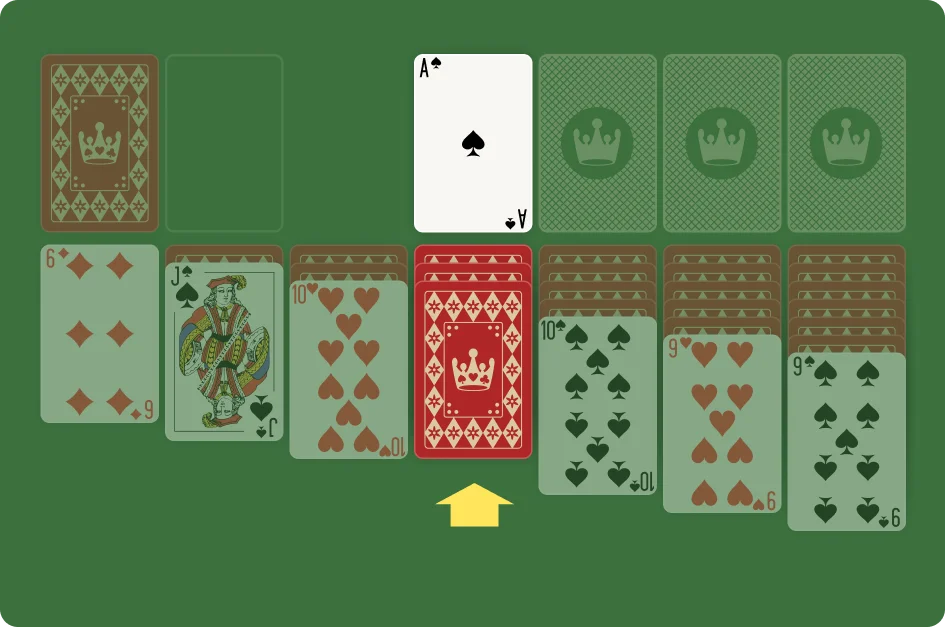
It’s better to make moves that reveal more cards in the deck rather than rotating the same cards around. More exposed cards lead to more options, such as completing a column or moving them to the foundation piles or the tableau.
Balance Tableau Piles
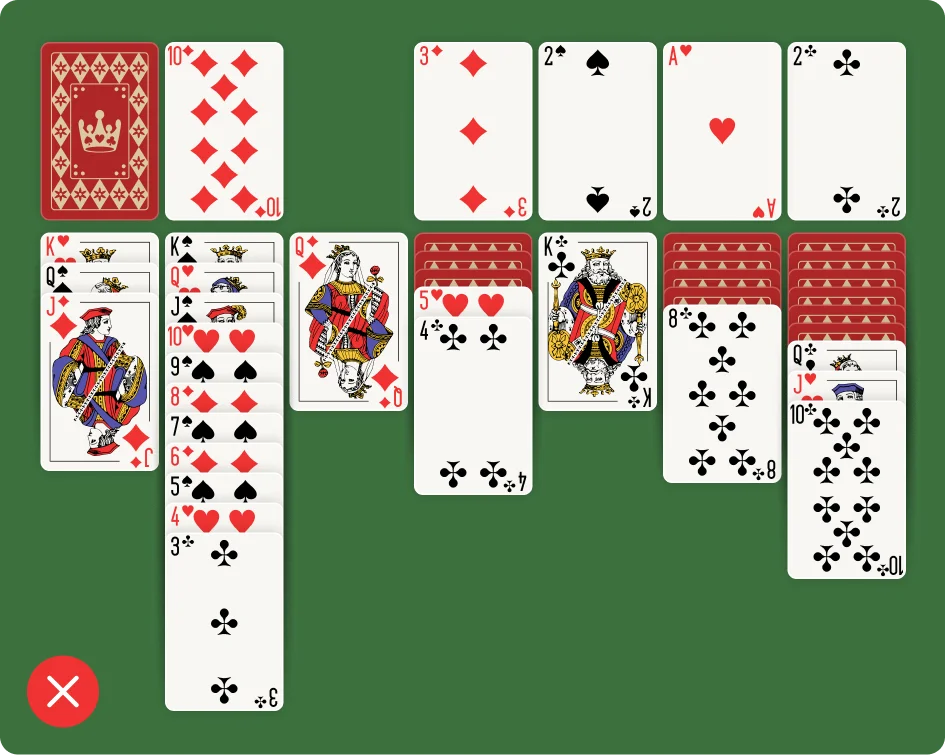
It’s not a good idea to have one long column in your tableau and then multiple short ones. Try to create balanced tableau columns. This will give you the best chance to move cards around. With more balanced columns on the board, you’ll have an equal chance to move around high- and low-ranking cards.
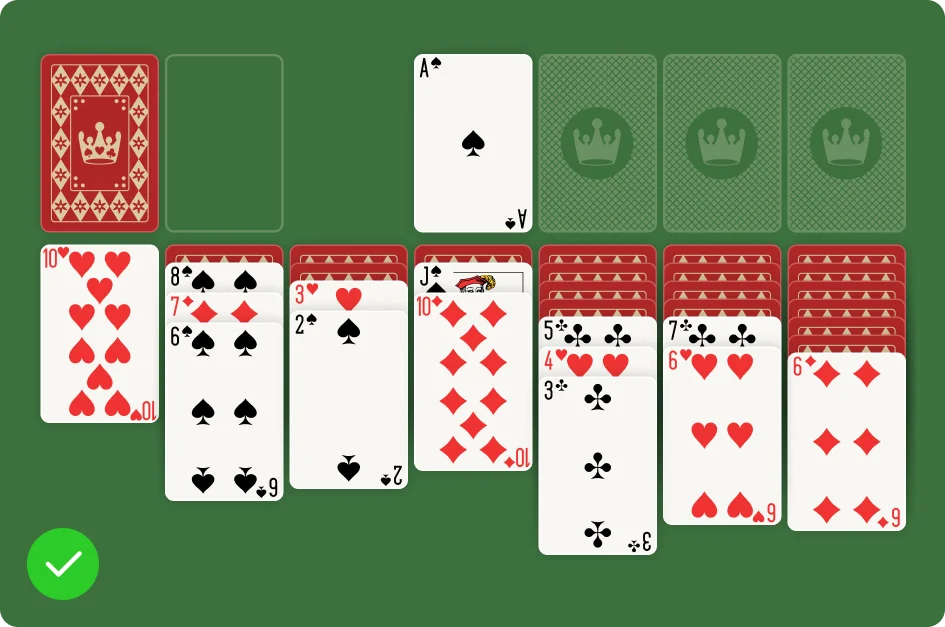
Delay Moving High Cards to the Foundation Pile
It’s tempting to move cards to the foundation as soon as possible. But, waiting can sometimes open up more moves. As a general rule, the higher the card number, the better it is to keep it in store until the last minute.
Practice and Pattern Recognition

If you play Klondike Solitaire for long enough, then you’ll develop an intuition for making good moves and avoiding bad ones. Patterns will start to stand out. You’ll find yourself able to spot matches and moves that you didn’t previously notice. Pattern recognition is a skill you develop after lots of practice. So, keep at it until you’ve mastered the game.
The Best Klondike Solitaire Strategies in a Nutshell
Let’s recap what we’ve learned so far. Trying to keep all these strategies in mind as you play a relaxing game of Klondike Solitaire can be challenging. You don’t need to try to remember them all. If you’re ever in a pickle, then you can refer to this table for a quick reference:
| Strategy | Key focus |
| Clear larger stacks | Prioritize revealing cards in long columns. |
| Keep in mind that the foundation has an ascending order and the tableau a descending order. | Avoid emptying a slot unless you have a King to place there. |
| Move low cards to the foundation | Quickly move Aces and low-value cards to the foundation piles. |
| Order and sequence | Sometimes it’s best to delay moving high-value cards to the foundation and thereby give yourself more options. |
| First move on stock pile | Draw from the stock pile at the start of a game. |
| Strategic use of undo option | Use the undo button sparingly – only in emergencies. |
| Plan ahead | Think several moves ahead to avoid trapping cards. |
| Expose more cards | Focus on moves that reveal more hidden cards. |
| Balance tableau piles | Try to build tableau piles that are roughly equal in length. |
| Delay moving high cards | Sometimes it’s best to delay moving high-value cards to the foundation and thereby give youself more options. |
| Practice and pattern recognition | Practice will help you develop pattern recognition and a general intuition for the game. |


